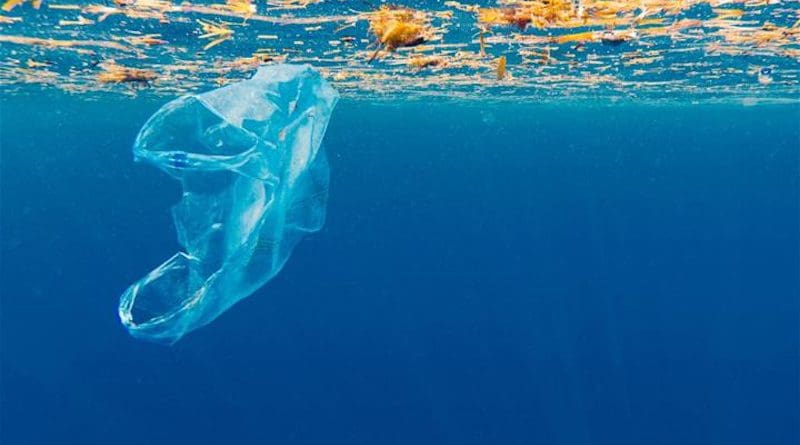Norway Launches ASEAN Cooperation Project To Reduce Maritime Plastic Pollution – OpEd
The ocean, covering more than 70 percent of the earth’s surface, is home to a variety of fascinating animal and plant species. Unfortunately, around 9 million tonnes of plastic waste enter the ocean each year, creating a devastating impact on marine ecosystems.
Millions of marine animals have died from ingesting plastics and becoming entangled in packaging materials. Plastics also decompose into microplastics, which then enter human food chains through seafood.
To reduce marine plastic pollution in the Association of Southeast Asian Nations (ASEAN) region, the Government of Norway has launched the ASEAN-Norway Cooperation Project on Local Capacity Building for Reducing Plastic Pollution in the ASEAN Region (ASEANO Project) Phase 2 in Siem Reap, Cambodia, on March 4, 2024. This was revealed by the ASEANO in a press release on March 4.
ASEAN, which was established in 1967, is a dynamic region with a combined gross domestic product (GDP) of US$3.91 trillion. It includes Indonesia, the Philippines, Vietnam, Thailand, Myanmar, Malaysia, Cambodia, Laos, Singapore, and Brunei Darussalam.
According to the Center for Southeast Asian Studies (CSEAS) Indonesia, a leading thinktank, throughout the 2019–2022 period, the ASEANO project in phase one has been successful in developing river plastic monitoring capacity at the local level, improving knowledge on household and industrial sources of plastic pollution, and increasing the effectiveness of plastic waste management policies. The first phase of the ASEANO project focused on selected pilot catchments in Indonesia and the Philippines.
“To continue supporting plastic pollution reduction measures among ASEAN member states (AMS), the ASEANO Project Phase 2 (ASEANO2) has been developed and approved. Phase 2 aims to further develop targeted and cost-efficient prevention and mitigation measures for plastic pollution in ASEAN through a multidisciplinary, cross-sectorial, and holistic approach,” the press release said.
The project will set up case study sites in Cambodia and Vietnam.
“We need to work at different levels, international and regional, as well as country and local levels. ASEANO is an important project in that respect, and it is my hope that Phase 2 will be as successful as Phase 1 in enhancing local capacity in monitoring and identifying plastic pollution sources as well as in increasing the effectiveness of plastic waste management policies,” the ASEANO said in the release, quoting the Ambassador of Norway to ASEAN Kjell Tormod Pettersen as saying.
Phase 2 of the ASEANO project is a commitment by ASEAN and Norway to reduce marine plastic pollution.
“This initiative builds upon the successful groundwork laid during ASEANO Phase 1 and represents a significant step forward in our collective commitment to combat marine plastic pollution,” Thailand’s Dr. Pinsak Suraswadi, Director-General of the Department of Marine and Coastal Resources at the Ministry of Natural Resources and Environment, said.
The team will use a holistic approach, gained from experiences obtained in Indonesia and the Philippines during Phase 1.
“ASEANO Phase 2 aims to further develop targets and implement cost-efficient prevention and mitigation measures for plastic pollution in ASEAN. This multidisciplinary, cross-sectorial, and holistic approach will draw from experiences gained in Indonesia and the Philippines during the first phase, with study areas now extended to Cambodia and Vietnam,” the press release said quoting Dr. Marianne Olsen, Research Director of the Norwegian Institute for Water Research (NIVA), as saying.
The CSEAS is confident that it will achieve reduction targets through capacity-building and knowledge sharing.
“This initiative aims to enhance cooperation with a range of stakeholders to improve plastic management practices along the whole plastic value chain and to contribute to meeting sound reduction targets through capacity-building and knowledge-sharing,” Dr. Arisman, Executive Director of the CSEAS Indonesia, said.
ASEANO Phase 2, according to the CSEAS, will be implemented over four years (2023–2027) by the NIVA and CSEAS. One activity which will be undertaken, together with local partners in both Vietnam and Cambodia, is visits to rivers with the potential of becoming pilot sites for the ASEANO project.
Norway is an important Nordic country in Northern Europe. Despite its small population of 5.50 million people, it is a wealthy country, with a gross domestic product (GDP) is $550.41 billion. It has one of the highest GDP per capita in Europe, amounting to $99,821.
According to the Reuters news agency, Norway has a $1.6 trillion sovereign wealth fund, which is the world’s largest, thanks to its oil wealth. The fund earned a profit of $213 billion just last year.
Norway is also known for its contributions to global environmental protection. It was the first country to ban deforestation, and as a continuation of this commitment, Norway is now working toward reducing marine plastic pollution at the international level.

